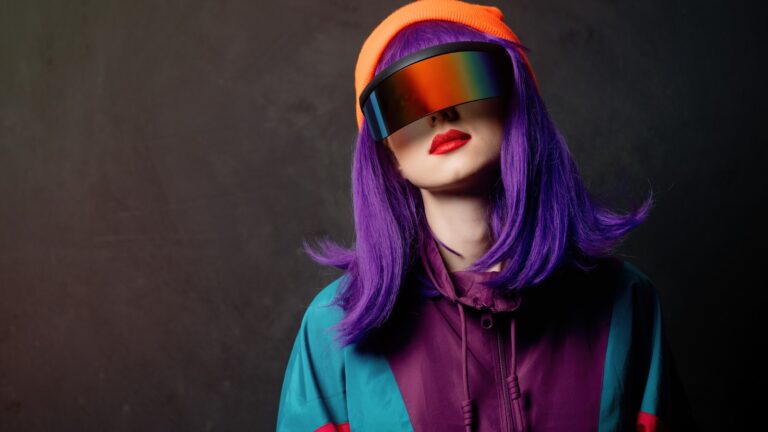Augmented Reality (AR) and Virtual Reality (VR) are two technologies that bridge the digital and physical worlds. They provide an immersive virtual experience where users can manipulate artificial environments. Hence, while VR sees a digital environment simulated in a computer, AR augments reality with virtual objects. These digital tools are famously used in multiple industries ranging from marketing, retail, healthcare, entertainment and education. According to an article by Anne Corning, the use of this technology is expected to bring revenue of approximately USD 50.9 billion by the end of 2026. In other words, she notes that the annual growth rate of AR/VR is 32.3 per cent. This blog article will trace the rise of AR/VR technology and explain the potential experts predict they will play in the foreseeable future.
How Did It All Start?
Keeping in mind that AR/VR are different from one another, VR was a term coined by Jaron Lanier and Tom Codell, both of who were scientists in 1987 and 1990, respectively. However, AR/VR technology was created further before, in 1838.
The Stereoscope and Its Brothers
When thinking about what amounted to VR back then, Charles Wheatstone created a stereoscope, one of the first devices that integrated VR. This optical system helps a person see different images depending on whether they viewed it through the left or right eye, providing a three-dimensional view of the same object. Later developments of this were done by David Brewster, who introduced the lenticular stereoscope used by the hospitality and entertainment industries for virtual tourism. Eventually, this inspired the science fiction novelist Stanley G Weinbaum, who published Pygamlion’s Spectacles. Interestingly, the way the novelist visualises AR/VR to be designed is very similar to the ultimate design associated with such technology today. In the novel, he explains that the device is a pair of goggles that allows the wearer to experience holographic where he can experience smell, taste and touch.
The Sensorama and telesphere Mask
In the 1950s, Morton Heiling infused the learnings of Wheatstone’s creation into the Sesorama, the first virtual simulator that included a stereoscopic 3D display. The Sesorama was a theatre cabinet that stimulated all senses, and he used it to show six of the films he made. In today’s context, this is similar to 3D movies watched in the cinema hall, allowing a person to immerse themselves into the film entirely. Heiling is further associated with creating the first VR head display invented in 1960. He called it the Telesphere Mask, and his significant contribution towards the industry has made him known as the Father of VR technology.
The Influener of The Modern Day VR Headset
The headset that is more familiar to society today, however, was influenced by Comeau and Bryan, who developed the first motion-tracking HMB in 1961. It was created for the military, who could gain visualisation of remote and dangerous situations. This led to the creation of the ultimate display, a concept meant to simulate reality to the extent that it was hard to find the difference in actual reality. The key person responsible for this is Ivan Sutherland, who wanted to make people feel like the “Wonderland into which Alice Walked”. In 1968l, he and his student Bob Sproull put the concept into practice. He, in other words, went on to create the first AR/VR head-mounted display. They named it Sword of Damocies, which, although it was quite heavy for a human to wear for a long duration, was the first time a proper headpiece design was made.
Nintendo Power Glove
In 1989, NASA incorporated AR/VR into its operations, leading to the creation of the Nintendo Power Glove. Subsequently, in 1991, AR/VR became available in public spaces to play arcade games and has inspired a range of other video games. It was AR/VR that also made it possible to monitor Mars through the creation of a rover, which was used as a reliable form of treatment for war veterans that had PTSD.
Google’s Contribution
Google entered the AR/VR sphere in 2007 with ‘street view’, which showed 360-degree images drawn from images captured by automobiles. In 2010 this was upgraded to a 3D mode. During this time, Oculus was also prototyped and launched in 2012. This inspired Facebook to enter the market by purchasing Oculus, which meant AR/VR was now being tested and integrated into social media. Since then, major tech giants have entered the circle to access such technology, making it one of the most transformative digital solutions in 2023.
Current and New AR/VR Trends to Look Out For in 2023 and Beyond

One of the most iconic lines on the subject of AR/VR was stated by Tim Cook, the CEO of Apple. According to him, “AR will be as important as eating three times a day”. With the rise in platforms such as metaverse, integrating AR/VR into daily life will be a familiar spectacle in the coming years. Here are some leading trends to look forward to in 2023 and beyond.
Accessing AR/VR on Your Mobile Phone
While AR/VR has been an excellent tool for many companies, it is common knowledge that it costs a lot to access. This is specifically due to the advanced features of the AR/VR headset advanced features. However, experts predict that 2023 will experience a rise in the number of people that have access to such technologies. This is made possible by integrating AR/VR chips into mobile phones. Hence, instead of acquiring expensive external equipment, any smartphone with a camera can reap the benefits of AR. As noted in a report by Statistica, around 1.4 billion people are expected to infuse AR/VR on their phones this year and 1.73 billion more in the next. The number of AR/VR headsets shipments is also expected to grow to more than 30 million units, a significant leap from 2020.
Make the Retailing Experience Much Easier and more Interactive
The advantages AR/VR unlocked in the retail industry are no surprise. The most popular feature in this respect was the trying-on clothes filter (Smart Mirrors) in a shop without having to go into a dressing room or enjoy a more interactive and visualised online shopping experience. The latter particularly was a response to the COVID-19 pandemic, which resulted in many retail shops experiencing significant loss of sales due to the lockdown. Anyone with a smart device can try on shoes, bags, and other clothes or accessories without leaving home. The great thing about this feature is that unlike having to rely on the model that is being featured, for instance, you can see how a specific item looks on you. This has led many retailers back in their physical stores to also increasingly adopt smart mirrors to optimise the time spent in a store.
The Rise of the Metaverse
When Facebook launched Metaverse, it wanted to provide a platform for businesses to form interconnected virtual communities. It allows the entertainment industry to host concerns, business communities to sell their products, host product launches, or even enter a sporting event. AR plays a role in this regard by introducing Non-fungible tokens (NFTs), allowing users to purchase and sell items the same way physical assets can. This helps assure consumers that what they purchase is real and that the business is not fraudulent. According to Gartner, the number of public users that will join the platform will increase. They estimate that by 2026, at least 25 per cent of the global population will spend a minimum of one hour in the metaverse. As NFTs are often associated with blockchain technology, the time it will take for consumers to get used to it may take some time.
Indoor and Outdoor Navigation
This is very similar to using an app like Google Maps. Suppose a newly enrolled student must find out where certain sections of their university are but have no one to ask from. Instead of having to waste time and get late to their class, AR navigating apps can help them find it easily. In essence, the AR navigating app provides directions based on their environment. This differs from GPS-oriented apps such as Google Maps, which depend on geographical coordinates. AR navigation apps use Bluetooth low energy (BLE)beacons for indoor navigation, which communicate with the radio frequency signals of other devices. Thus, users can precisely navigate themselves to their desired destination.
AR/VR As A Tool To Bring Together Global Communities
As AR/VR allows users to experience virtual realities from anywhere in the world, it is a digital tool that has brought global communities together. Since such features are now present in smartphones and also adopted in one of the largest social media platforms in the world, AR/VR has become more affordable and provides opportunities for youth and entrepreneurs who lack technical skills and knowledge to learn and take advantage of them in reality. The creation of more realistic-looking avatars and stimulating virtual environments have also made online platforms much more interesting.







